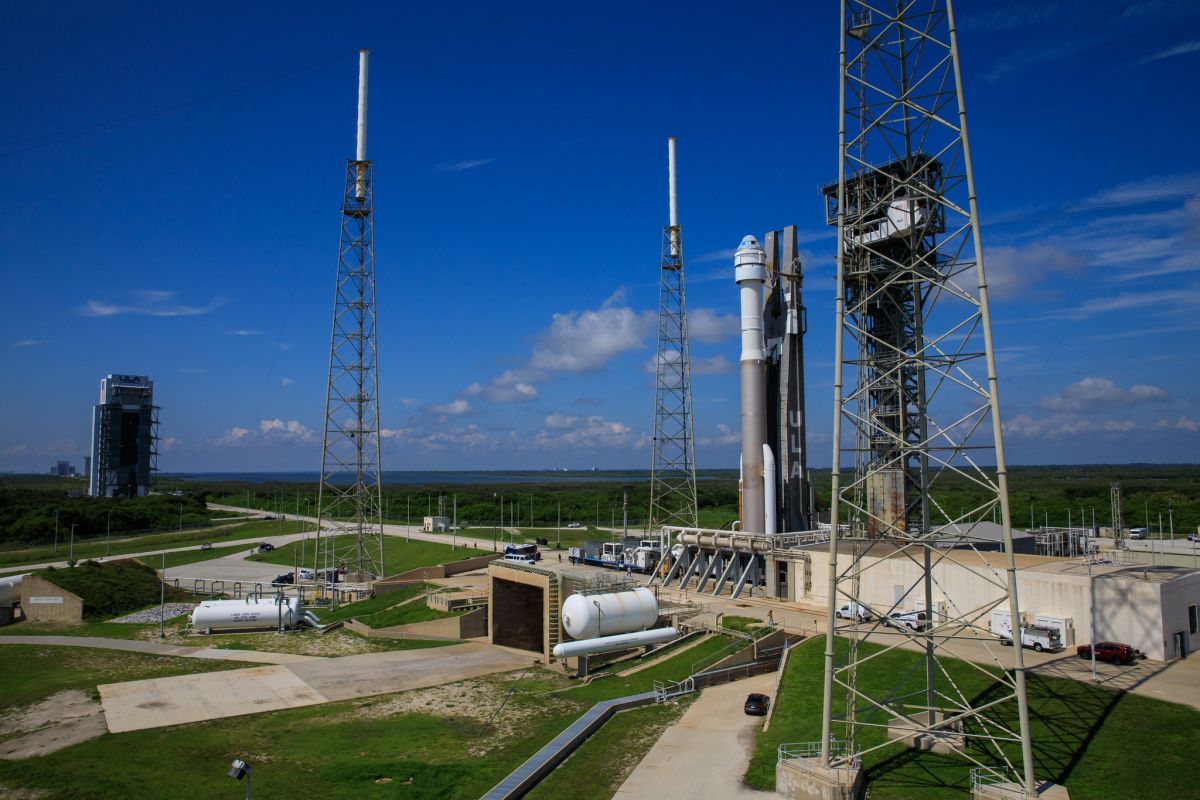A United Launch Alliance Atlas V rocket with Boeing’s CST-100 Starliner spacecraft aboard is seen as it is rolled out of the Vertical Integration Facility on Monday, Aug. 2, 2021.
Read MoreMonth: August 2021
NASA chief excited for Starliner launch, touts importance of competition
CAPE CANAVERAL, Fla. — NASA Administrator Bill Nelson is ready to cheer on the launch of Boeing’s Starliner crew capsule on a vital uncrewed test flight this week. Boeing and NASA are gearing up to launch a mission dubbed Orbital Flight Test 2 (OFT-2) on a journey to the International Space Station (ISS). Starliner is perched atop its United Launch Alliance Atlas V rocket and looking to blast off from Space Launch Complex 41 here at Cape Canaveral Space Force Station on Tuesday, Aug. 3 at 1:20 p.m. EDT (1720…
Read MoreA space laser is tracking subglacial lakes hidden in Antarctica
A NASA satellite in space that shoots a laser beam down to Earth has spotted still more subsurface lakes sandwiched between Antarctica’s land and ice. Antarctica is land with hundreds of feet or meters of ice sitting atop it. In between these two layers, elements such as the friction from the ice and the continental bedrock, fluctuations in how much downward pressure the ice exerts, and heat released from Earth creates hundreds of hidden lakes. These pocket lakes are dynamic, too: In 2007, glaciologist Helen Amanda Fricker used data from…
Read MoreIceland may be the tip of a sunken continent
Iceland may be the last exposed remnant of a nearly Texas-size continent — called Icelandia — that sank beneath the North Atlantic Ocean about 10 million years ago, according to a new theory proposed by an international team of geophysicists and geologists. The theory goes against long-standing ideas about the formation of Iceland and the North Atlantic, but the researchers say the theory explains both the geological features of the ocean floor and why Earth‘s crust beneath Iceland is so much thicker than it should be. Outside experts not affiliated…
Read MoreAll eyes on weather as Boeing looks to Starliner launch on Tuesday
Weather concerns continue as NASA and Boeing look to launch the Starliner capsule on a vital uncrewed test flight to the International Space Station on Tuesday (Aug. 3). Launch is targeting 1:20 p.m. EDT (1720 GMT), and current weather patterns are favoring afternoon showers and thunderstorms along the eastern coast of Florida, according to the 45th Weather Squadron, which monitors conditions for launches from the Kennedy Space Center and the Cape Canaveral Space Force Base. There’s a 40% chance the weather will permit Tuesday’s launch, according to the office’s current…
Read MoreLook up! Saturn shines bright, shows off rings as it reaches opposition.
Gear up for Saturn‘s annual show in the night sky! Starting Monday (Aug. 2), you can find Saturn shining in the sky as part of a celestial phenomenon called opposition. Earth and the ringed planet will be on the same side of the sun and connected with our star by an invisible line, allowing skygazers on Earth to see a fully illuminated Saturn. Saturn reaches this brightest point at about 2 a.m. EDT (0600 GMT) on Monday, according to the website EarthSky.org. It will be highest in the sky around…
Read More4 bizarre Stephen Hawking theories that turned out to be right (and 6 we’re not sure about)
Stephen Hawking was one of the greatest theoretical physicists of the modern age. Best known for his appearances in popular media and his lifelong battle against debilitating illness, his true impact on posterity comes from his brilliant five-decade career in science. Beginning with his doctoral thesis in 1966, his groundbreaking work continued nonstop right up to his final paper in 2018, completed just days before his death at the age of 76. Hawking worked at the intellectual cutting edge of physics, and his theories often seemed bizarrely far-out at the…
Read MoreWelcome, Jupiter & Saturn!
The Perseids are upon us — and as you’re looking out for shooting stars, look for Jupiter and Saturn low in the southeast as soon as night begins to fall. The post Welcome, Jupiter & Saturn! appeared first on Sky & Telescope.
Read More